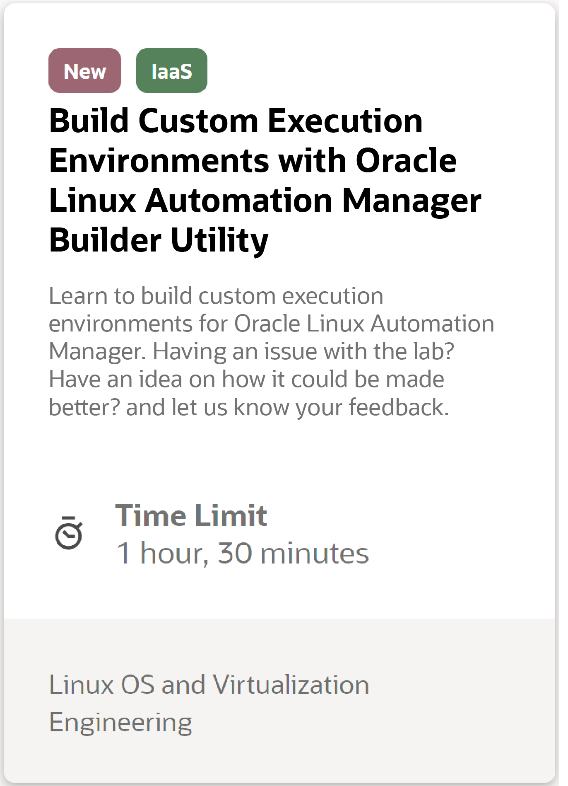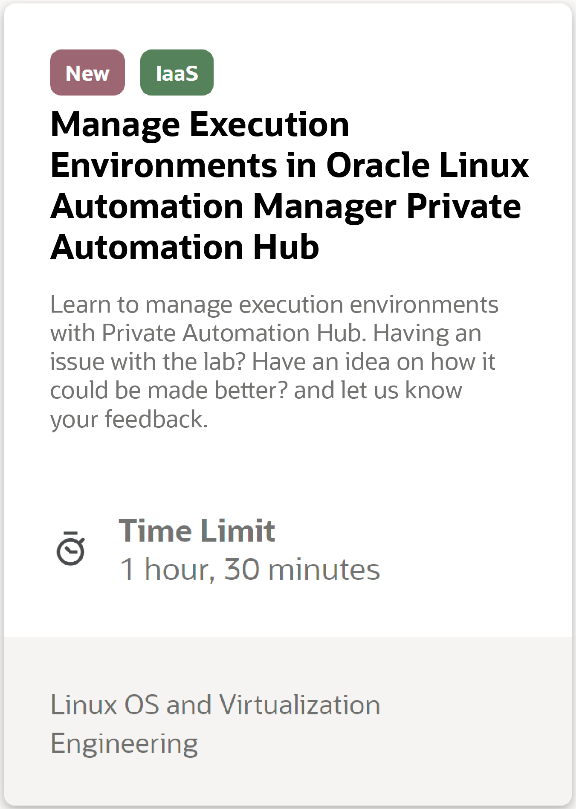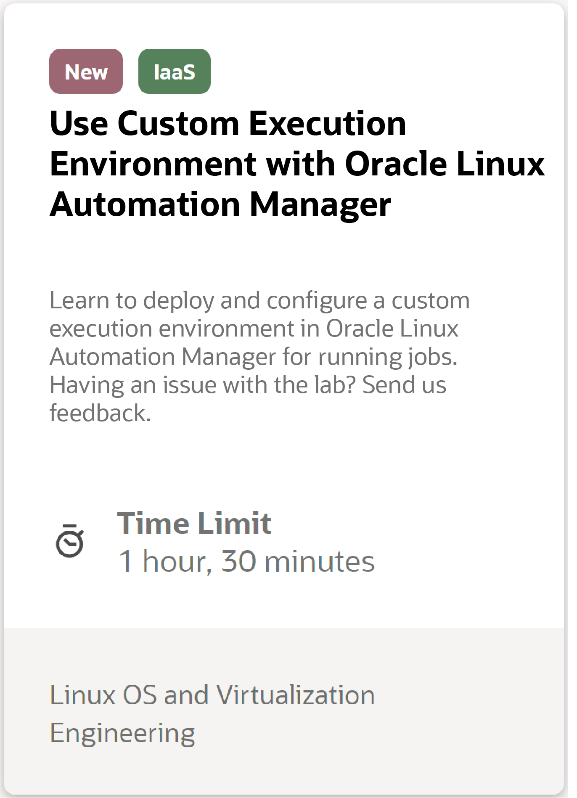This blog was contributed to by Bill Graef, who works in the training development team and has designed dozens of hands-on labs for a variety of Oracle Linux and Virtualization products.
The Oracle Linux Automation Manager learning track now includes three hands-on Luna labs that walk you through building, managing, and using execution environments. Execution environments are containers that you can use with Oracle Linux Automation Manager control and execution plane nodes. Oracle Linux Automation Manager supports a cluster deployment of multiple control and execution nodes, with the control nodes acting as the entry point into the cluster.
Build Custom Execution Environments with Oracle Linux Automation Manager Builder Utility
Learn to use the Builder utility to build custom execution environments for Oracle Linux Automation Manager. The Builder utility is a tool based on the upstream ansible-builder project for generating custom execution environments for Oracle Linux Automation Manager.
Get hands-on experience with the free Luna lab.
|
|
Simple steps to perform the labThe lab provides steps to install the Builder utility, create the custom execution environment definition, build the custom execution environment, and test the custom execution environment image. In the free lab environment, an Oracle Linux system is provisioned with a non-root user with sudo permissions.
|
Manage Execution Environments in Oracle Linux Automation Manager Private Automation Hub
Private Automation Hub is an Oracle Linux Automation Manager repository for managing collections, execution environment images, and other curated content locally within a customer’s infrastructure. You can upload execution environments to Private Automation Hub where Oracle Linux Automation Manager can access them and use them to run playbooks.
Being able to use customized container images as execution environments to run playbooks allows you to ensure you have all the packages and dependencies you need on the container image necessary to run playbooks in a consistent and dependable way.
Get hands-on experience with the free Luna lab.
|
|
Simple steps to perform the labThe lab provides steps to install Private Automation Hub, secure the passwords using ansible-vault, and connect to Private Automation Hub using an SSH tunnel. Private Automation Hub acts as a repository for container images that administrators can interact with using Podman and the WebUI. The lab provides steps to add the execution environment using the WebUI and push the execution environment using Podman. In the free lab environment, two Oracle Linux systems are provisioned with a non-root user with sudo permissions. The free lab environment deploys Oracle Linux Automation Manager Builder utility and creates a custom execution environment. |
Use Custom Execution Environments with Oracle Linux Automation Manager
Through the use of a custom execution environment (ee), Oracle Linux Automation Manager can leverage playbooks containing collections and other resources not available with the default olam-ee image. You build the custom execution environment using the Builder utility, store it on Private Automation Hub, and then pull it into Oracle Linux Automation Manager.
Get hands-on experience with the free Luna lab.
|
|
Simple steps to perform the labThe lab provides steps to push a custom execution environment to Private Automation Hub using a playbook, add a custom execution environment to Oracle Linux Automation Manager, and use the custom execution environment to run a job. In the free lab environment, three Oracle Linux systems are provisioned: a development environment using the Builder utility, a system for Private Automation Hub, and a system for running Oracle Linux Automation Manager.
|
Resources Available
Embrace the possibilities of Oracle Linux Automation Manager and learn more by visiting the following resources.
- Oracle Linux Automation Manager Learning Track
- Oracle Linux Automation Manager Documentation
- Oracle Linux



